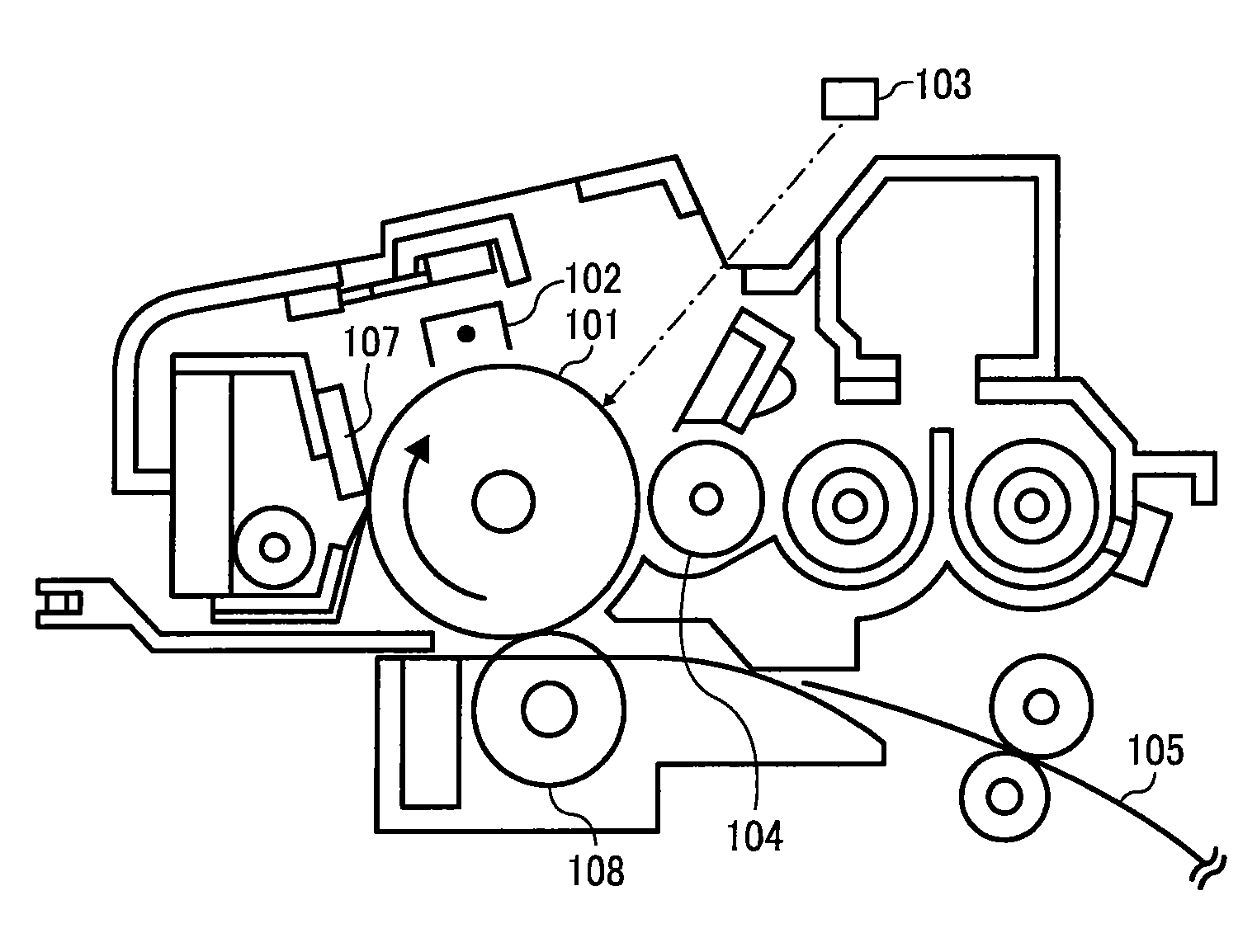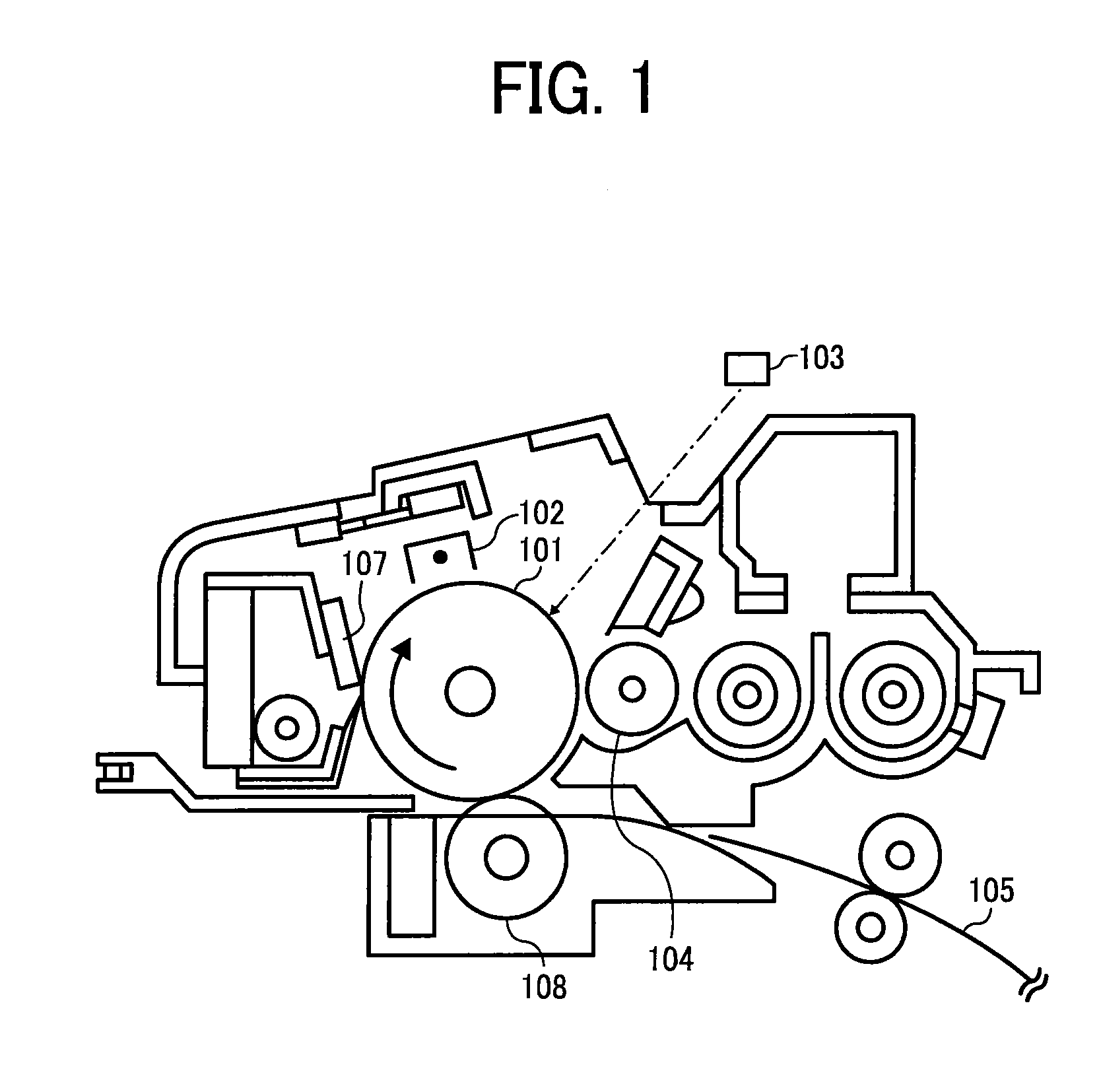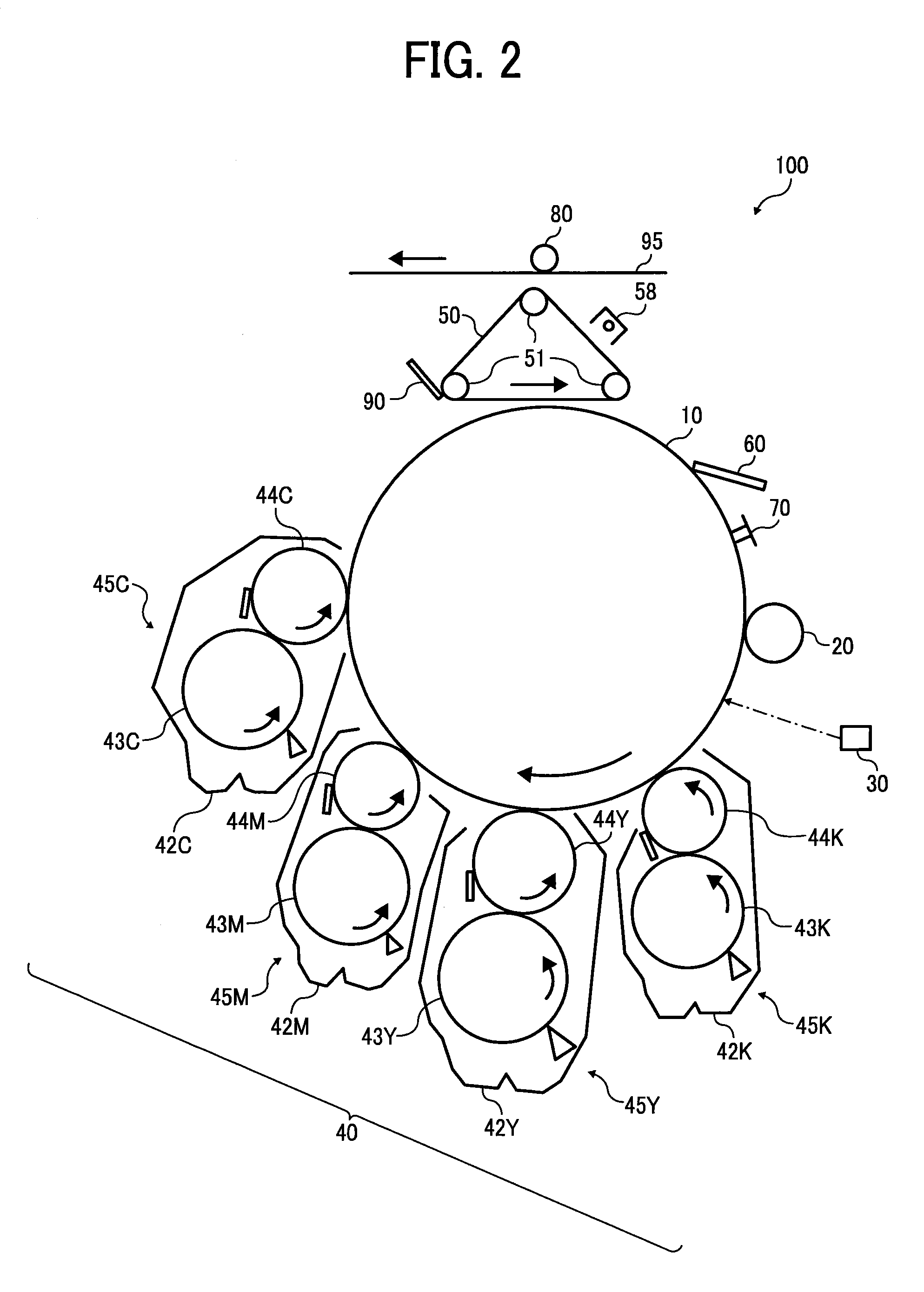Toner, developer, and image forming apparatus
a technology of toner and developer, applied in the field of toner, can solve the problems of brittle toner, limited material usable for pulverization method, and inability to withstand abrasion, and achieve good and reliable fixability and thermostable preservability
- Summary
- Abstract
- Description
- Claims
- Application Information
AI Technical Summary
Benefits of technology
Problems solved by technology
Method used
Image
Examples
synthesis example 1
Synthesis of Intermediate Polyester Resin (1)
[0230]In a reaction vessel equipped with a condenser, a stirrer, and a nitrogen inlet pipe, 640 parts of 1,2-propylene glycol, 650 parts of dimethyl terephthalate, 171 parts of adipic acid, and 5 parts of tetrabutoxy titanate serving as a condensation catalyst were contained. The mixture was subjected to a reaction for 8 hours at 170° C. under nitrogen airflow, and subsequently for 4 hours at 225° C. The mixture was further subjected to a reaction under a reduced pressure of from 5 to 20 mmHg, and a reaction product was taken out of the reaction vessel when the softening point thereof became 150° C. The reaction product was cooled and pulverized. Thus, an intermediate polyester resin (1) was prepared.
[0231]The intermediate polyester resin (1) had a number average molecular weight (Mn) of 2,200, a weight average molecular weight (Mw) of 8,500, an acid value of 17 mgKOH / g, and a hydroxyl value of 36 mgKOH / g.
synthesis example 2
Synthesis of Resin (1)
[0232]In an autoclave reaction vessel equipped with a thermometer and a stirrer, 130 parts of the intermediate polyester resin (1) prepared above, 50 parts of L-lactide, and 50 parts of D-lactide were contained. Further, 1 part of titanium terephthalate was added thereto. After replacing the atmosphere with nitrogen gas, the mixture was subjected to a reaction for 6 hours at 160° C. Thus, resin (1), serving as the first resin, was prepared.
synthesis example 3
Synthesis of Resin (2)
[0233]The procedure for preparation of the resin (1) was repeated except that the amount of the intermediate polyester resin (1) was changed to 40 parts. Thus, resin (2), serving as the first resin, was prepared.
PUM
| Property | Measurement | Unit |
|---|---|---|
| Percent by mass | aaaaa | aaaaa |
| Percent by mass | aaaaa | aaaaa |
| Percent by mass | aaaaa | aaaaa |
Abstract
Description
Claims
Application Information
 Login to View More
Login to View More - R&D
- Intellectual Property
- Life Sciences
- Materials
- Tech Scout
- Unparalleled Data Quality
- Higher Quality Content
- 60% Fewer Hallucinations
Browse by: Latest US Patents, China's latest patents, Technical Efficacy Thesaurus, Application Domain, Technology Topic, Popular Technical Reports.
© 2025 PatSnap. All rights reserved.Legal|Privacy policy|Modern Slavery Act Transparency Statement|Sitemap|About US| Contact US: help@patsnap.com



